A few Hall of Famers and some who should be: Nine old-time Reds players you don’t know
- Oops!Something went wrong.Please try again later.
- Oops!Something went wrong.Please try again later.
- Oops!Something went wrong.Please try again later.
- Oops!Something went wrong.Please try again later.
- Oops!Something went wrong.Please try again later.
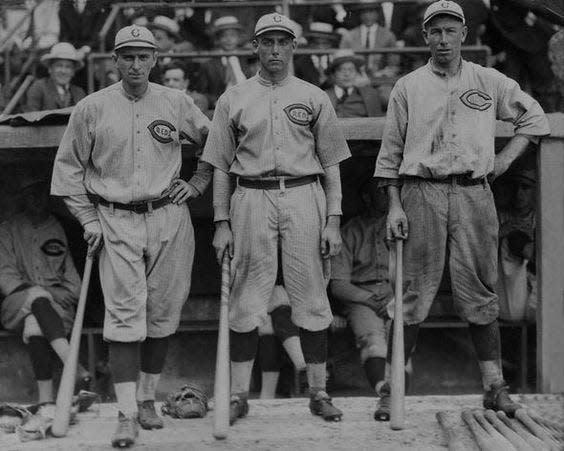
The Cincinnati Reds have a deep, rich history that dates back even before becoming the first professional team in 1869. Many of the early Reds teams get little recognition these days, relegated to stat sheets. So, here’s a lineup of notable Reds players from the early and dead-ball eras before 1920. Some are among the best players of the era, others are the most interesting.
William ‘Dummy’ Hoy, OF
William “Dummy” Hoy was the most accomplished deaf player in major league history. His nickname was a common term back then for someone who could not speak, although Hoy could vocalize a bit. He became deaf after suffering from meningitis when he was 3.
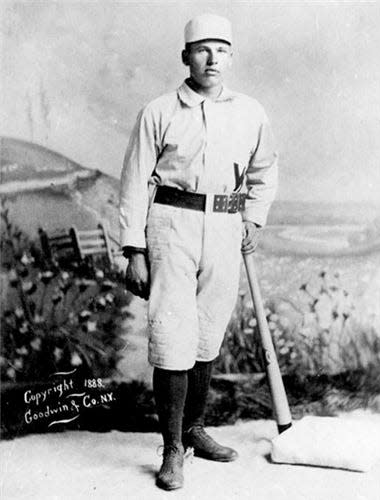
At 5 feet 6, Hoy had a small strike zone and was quite fast. He stole 82 bases as a rookie with the Washington Nationals in 1888. In 1889, the centerfielder set an MLB record for throwing out three runners at the plate in one game. Hoy spent 1894-1897 with the Reds, as well as his last season in 1902.
In 1961, at age 99, Hoy threw out the first pitch at Game 3 of the World Series at Crosley Field. He died of a stroke that December.
“Maybe Dummy Hoy didn’t hit as many home runs as Babe Ruth or Hank Aaron or have as many singles as Ty Cobb or Pete Rose. But he did more,” Joshua Leland Evans wrote in Sports Collectors Digest. “He is a symbol of people who just need to be given a chance – a chance to be treated just like everyone else. Put Dummy Hoy in the Hall of Fame.”
Heinie Groh, 3B
Heinie Groh was the captain of the Reds’ 1919 World Series team. Small in stature, he proved himself a capable hitter with his signature “bottle bat,” which had a thicker barrel and a whittled-down handle so it looked like a bottle.
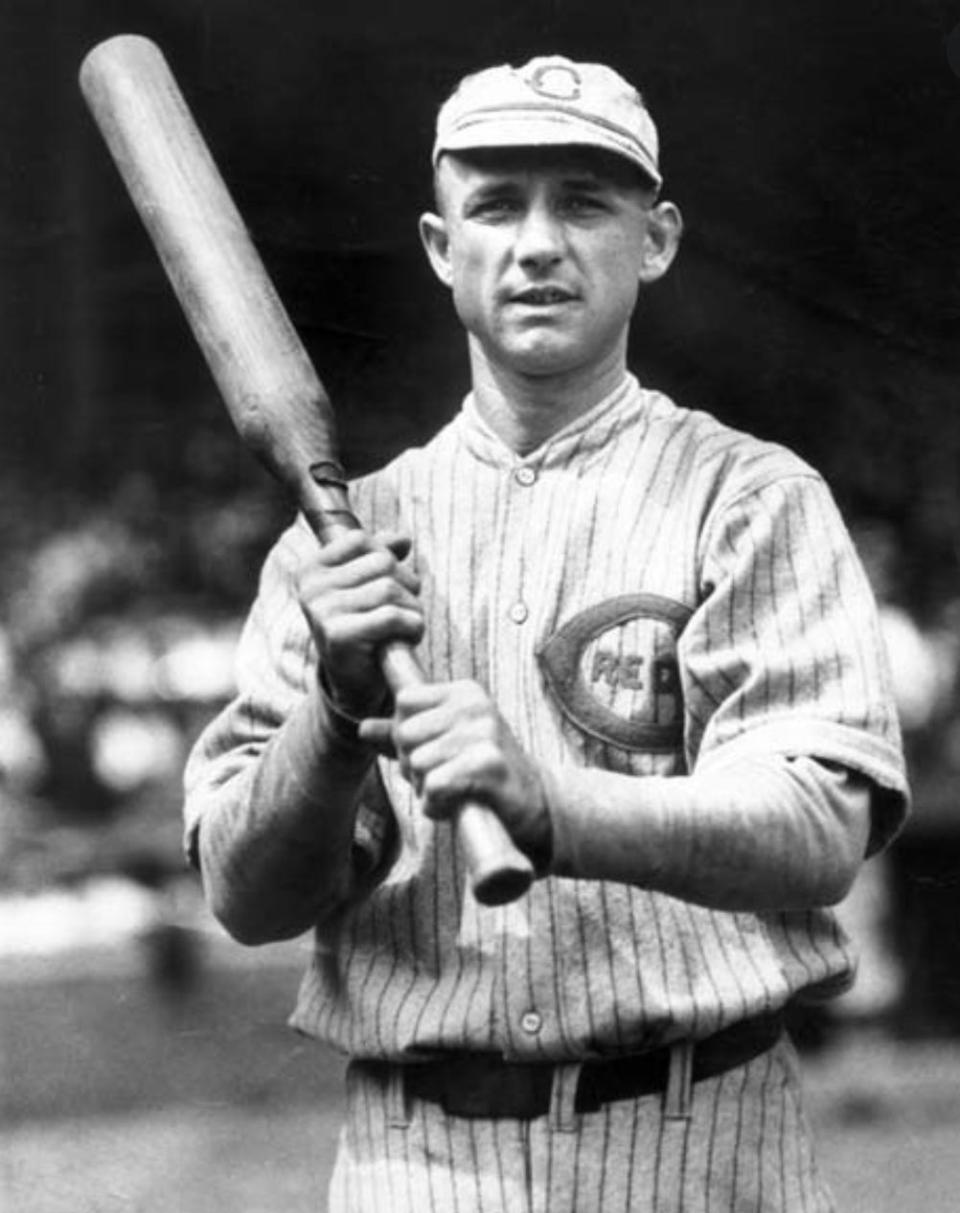
Groh, traded to the Reds in 1913, played several All-Star caliber seasons in Cincinnati. The sure-handed third baseman had a .967 career fielding average, the best for his position before 1920 when bunts were an everyday strategy.
In 1921, Groh had a bitter salary dispute with Reds owner Garry Herrmann and refused to play in Cincinnati anymore. He agreed to sign the Reds contract and be traded to the Giants, but Commissioner Kenesaw Mountain Landis nixed the deal, forcing Groh to stay in Cincinnati for the rest of the season. He was traded to New York the next year.
Bid McPhee, 2B
Second baseman John Alexander “Bid” McPhee was one of the best fielders of his time, even though he didn’t wear a mitt until years after it came into common use. “This glove business has gone a little too far,” he said. “True, hot-hit balls do sting a little at the opening of the season, but after you get used to it there is no trouble on that score.”

He spent his entire 18-year career with the Reds, playing from 1882-1899. He finally donned a glove in 1896 to protect his sore left hand and his fielding percentage jumped from .955 in 1895 to .978. His 189 triples are still the 11th most all-time.
In 1932, the Sporting News erroneously published his obituary. McPhee clipped out the obit and sent it to his friend, who wrote to the magazine, “John A. McPhee is an exceedingly lively corpse.”
McPhee, who died in 1943, was mostly forgotten until the Veterans Committee elected him to the Hall of Fame in 2000.
Edd Roush, OF
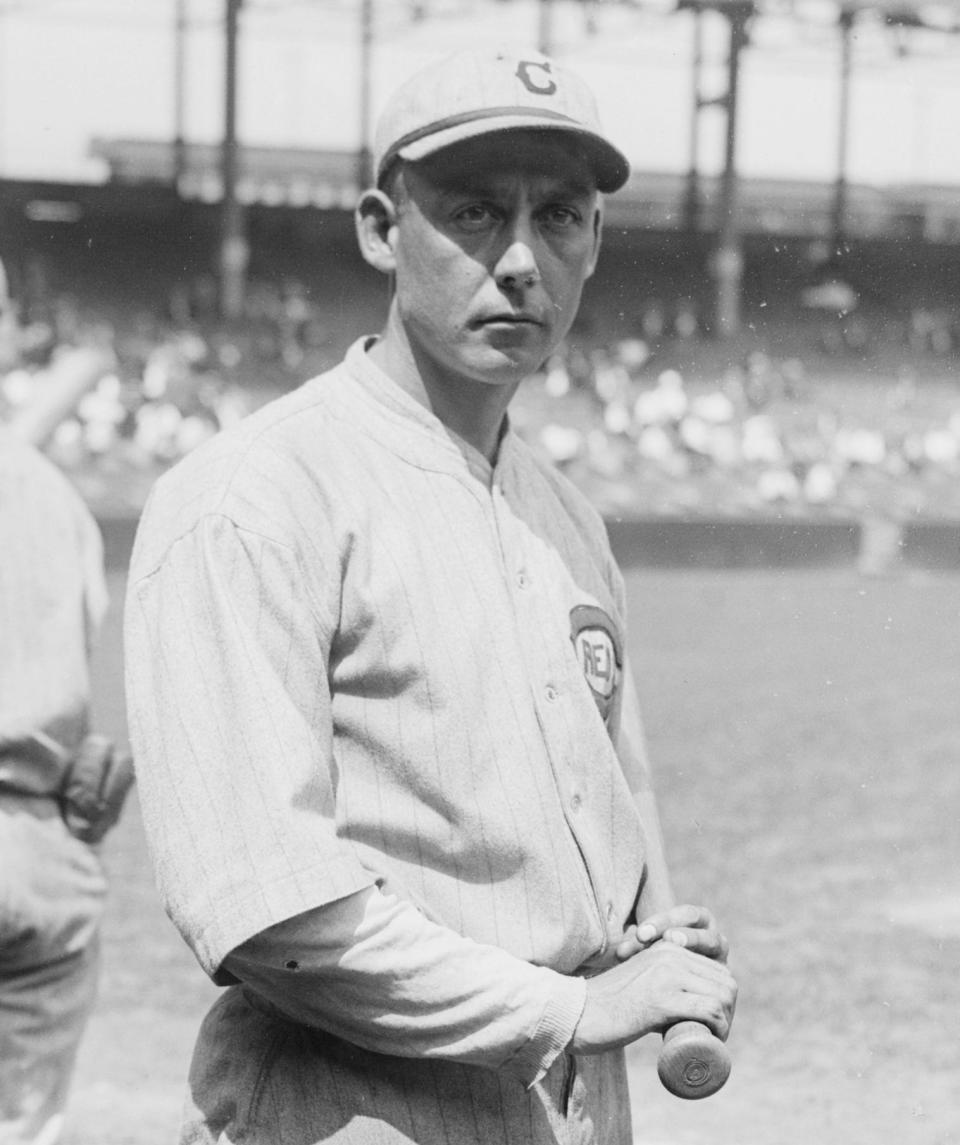
If there is any old-time Reds player fans should know, and who should have a statue at Crosley Terrace, it’s Edd Roush.
The Reds’ best player of the era, Roush was a lifetime .323 hitter. He earned two batting titles (1917, 1919), missing a third (1918) by a whisker, and hit north of .350 from 1921-1923. “Some batters, and good ones too, scoff at the whole theory of place hitting, calling it a myth,” Roush said. “They are wrong, however.”
He led the Reds to their first World Championship in 1919 and was elected to the Hall of Fame in 1962.
Sam Crawford, OF
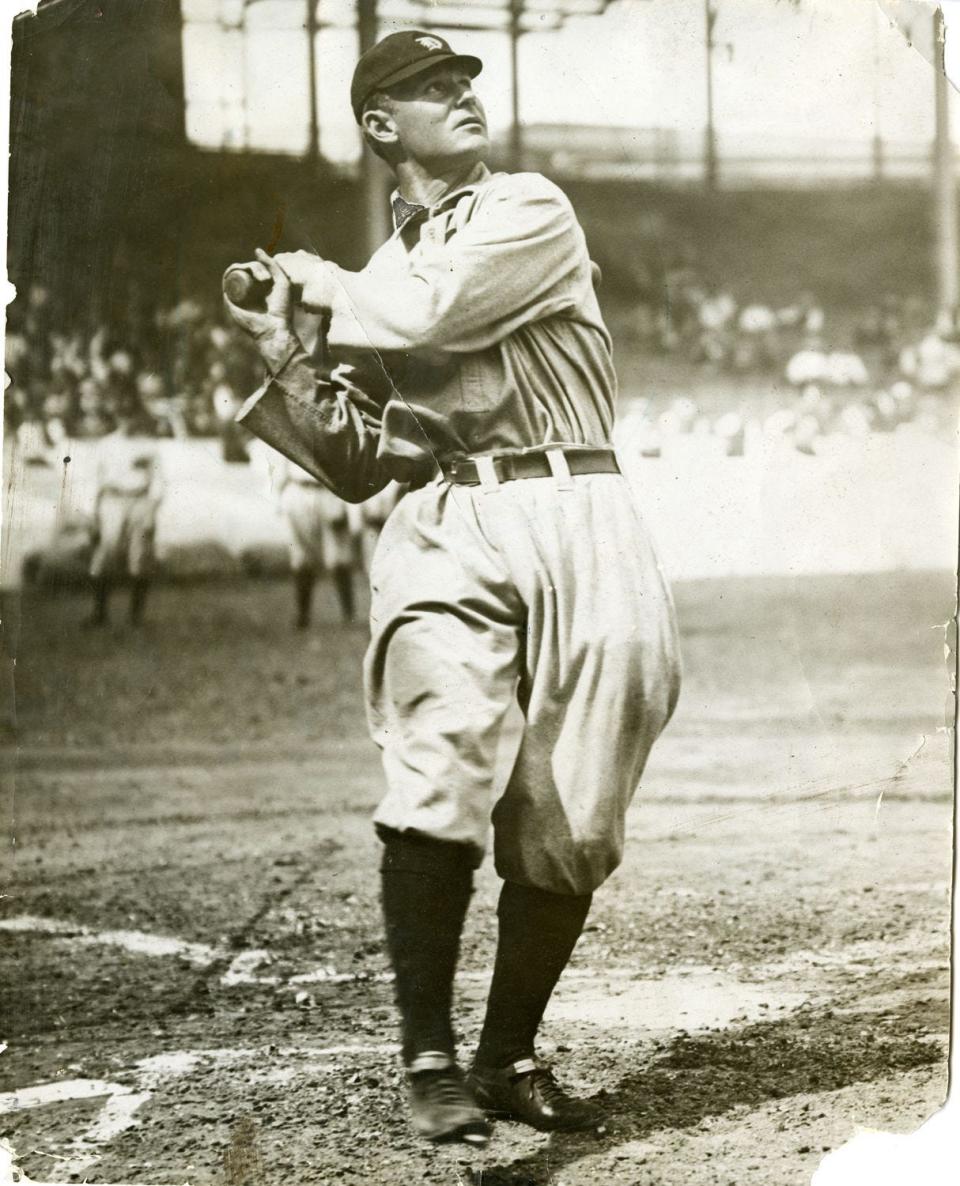
“Wahoo Sam” Crawford, from Wahoo, Nebraska, owns the MLB record for the most triples with 309. He spent three seasons with the Reds, 1899-1902, at the start of his career. In 1901, Crawford hit .330 with 16 home runs, 12 of them the inside-the-park variety, which is still a record.
At the end of the 1902 season, the National League and America League were engaged in a ruthless bidding war for players, leading to a milestone agreement to unite the leagues. Crawford had signed with both the Reds and the Detroit Tigers. The courts awarded him to Detroit and Crawford went on to a Hall of Fame career playing alongside Ty Cobb.
Hal Chase, 1B
Hal Chase was one of the top first basemen in the game ... when he wasn’t betting on it. Signed by the Reds in 1916, the veteran hit a double in his first at-bat, stole third, then stole home. He led the National League with a .339 batting average that year.

But Reds manager Christy Mathewson noticed his erratic play and in 1918 suspended Chase. “I will not stand for indifferent or careless playing on the part of a man of such great natural ability as Hal possesses,” Mathewson said. Evidence of Chase throwing games was presented to National League president John Heydler, but Chase was acquitted. He was later suspended, then banned from baseball for betting on games.
“Hal Chase’s career was one of the real tragedies of baseball,” Enquirer columnist Joseph Garretson wrote upon Chase’s death in 1947.
“Here in Cincinnati, he used to bet on the games in a saloon at Walnut Street and Gano Alley. Sometimes he bet on the Reds to win and sometimes he bet against his own team. On the days he bet on his own team to win, the fans saw some sparkling work around first base, at the plate and on the base paths, but when his dough was down the other way, he played like something less than a champion.”
Buck Herzog, SS
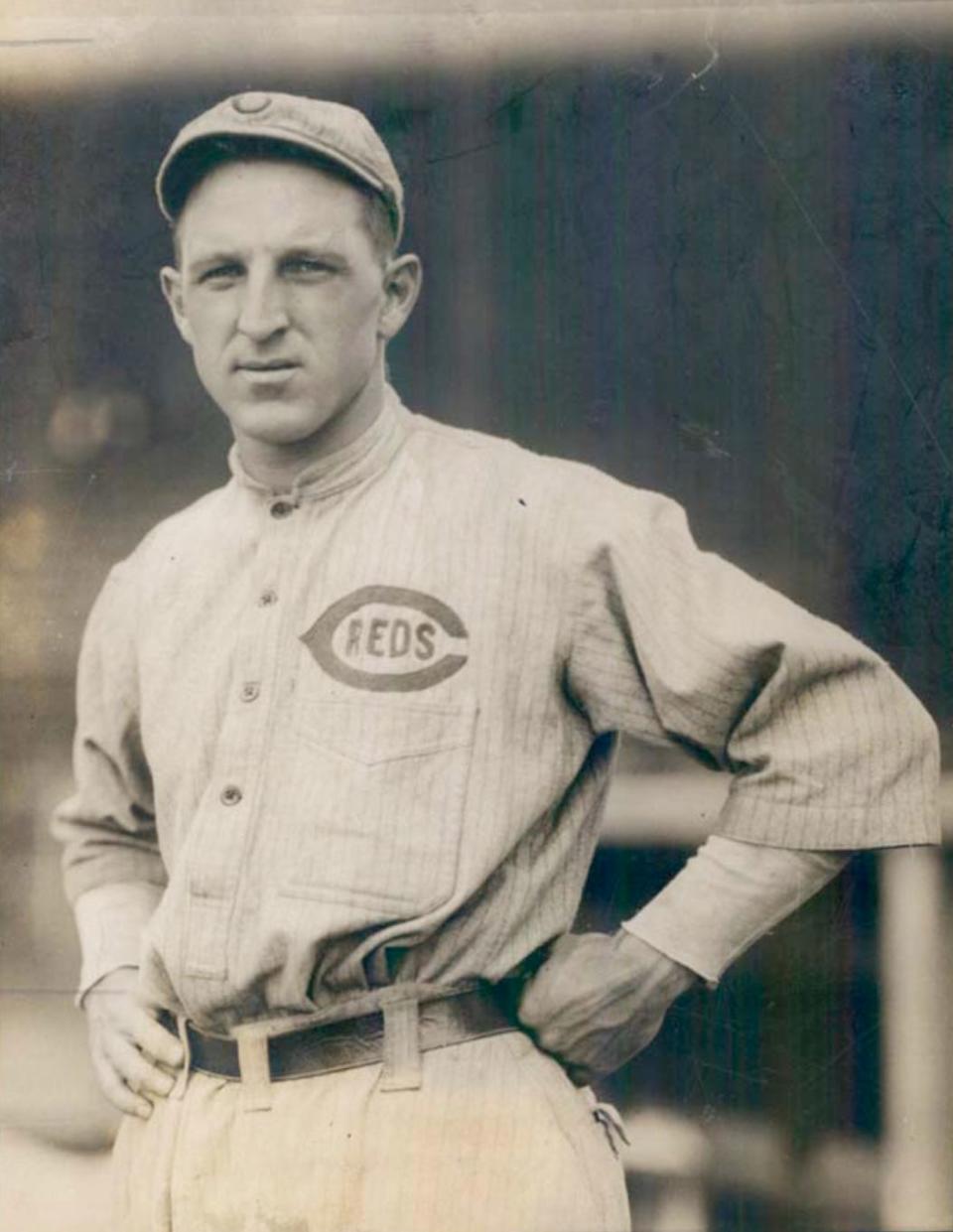
Veteran shortstop Buck Herzog was the Reds’ player-manager from 1914-1916. He had good stats as a player, but not so much as a manager. The Reds were just 165-226 in his two-plus seasons as skipper. In July 1916, he and Red Killefer were traded to the Giants for three future Hall of Famers – Christy Mathewson, Bill McKechnie and Edd Roush.
John Roll McLean, C
Before John McLean became the publisher of The Cincinnati Enquirer, he played the 1867 season as the Reds’ barehanded catcher. In those days, catchers wore no protective equipment. He was among the first to stand behind the batter – which also ended his career. He was hit by a foul tip and nearly lost his left eye.
He then joined his father’s newspaper, working his way up from copyboy to publisher. McLean owned both The Enquirer and the Washington Post, as well as the short-lived baseball team, the Cincinnati Outlaw Reds, in the Union Association that lasted one season in 1884.
Dolf Luque, P
Adolfo “Dolf” Luque was Major League Baseball’s first big-name Latino player. The right-hander was the first Latino pitcher, the first Latino to win a World Series game and a championship, and the first to lead the league in ERA, wins and shutouts.
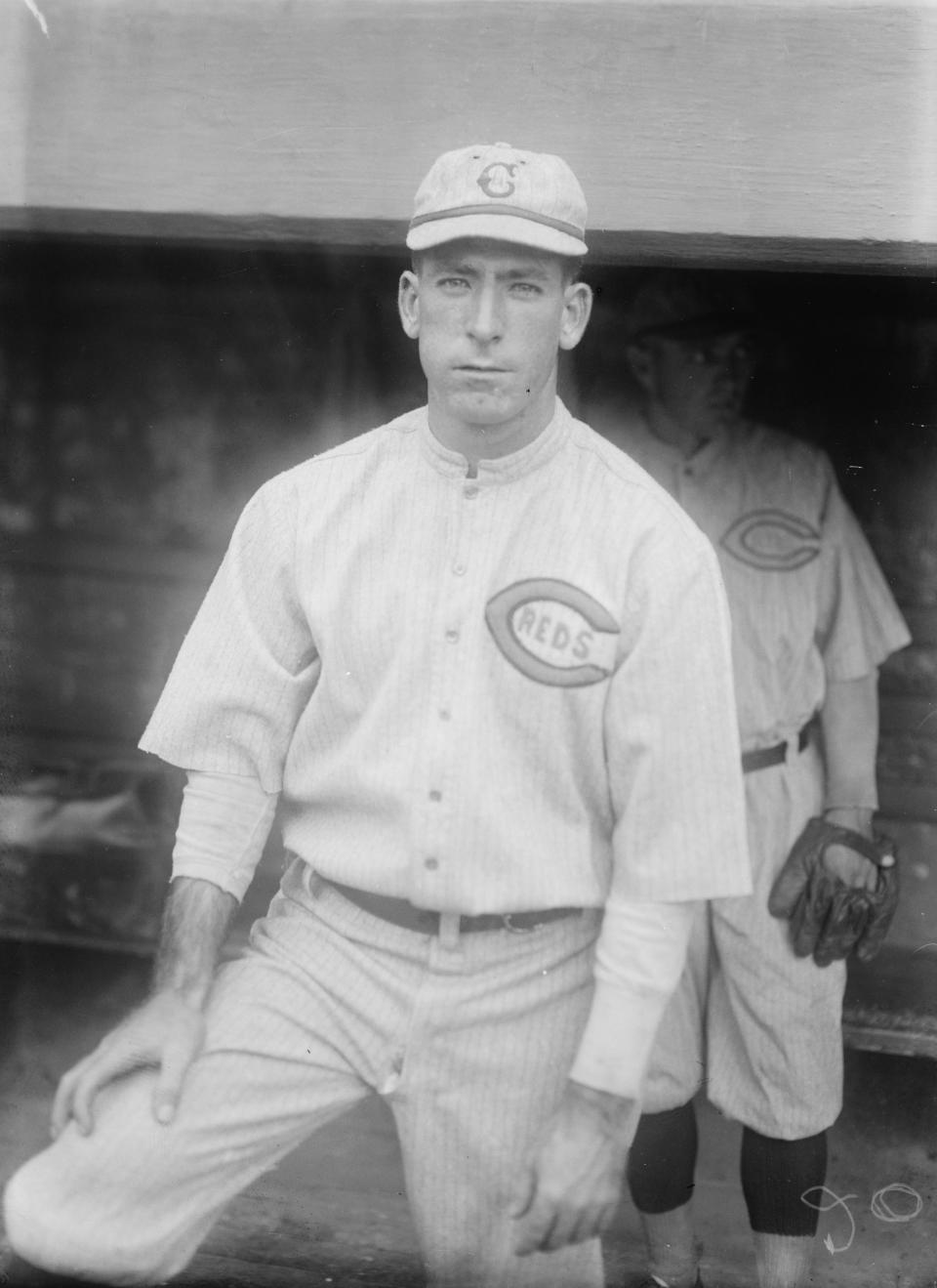
Born in Havana, Cuba, the fair-skinned, blue-eyed Luque was allowed to play in the majors when his darker-skinned countrymen were not. He also played for the Cuban Stars in the Negro league.
With the Reds, Luque was a relief pitcher during the 1919 World Series. As a starter in 1923, he led the league with 27 wins (still a modern-era Reds record) and a 1.93 ERA. He pitched 154 of his 194 wins with the Reds, from 1918-1929.
He also played in the Cuban League for 22 winters and coached for 24, winning eight titles.
Not a bad lineup, eh?
Sources: “The Cincinnati Reds” by Lee Allen, “The Glory of Their Times” by Larry Ritter, “Base Ball Pioneers, 1850-1870,” Society for American Baseball Research, Baseball Reference, Enquirer files, Wikipedia, DummyHoy.com, La Vida Baseball, Baseball Hall of Fame.
This article originally appeared on Cincinnati Enquirer: 9 old-time Cincinnati Reds players you might not know

